Plate And Frame Filter Press Equipment
Manual & Semi-Automatic Plate & Frame Filter Press | Versatile Filtration Solutions
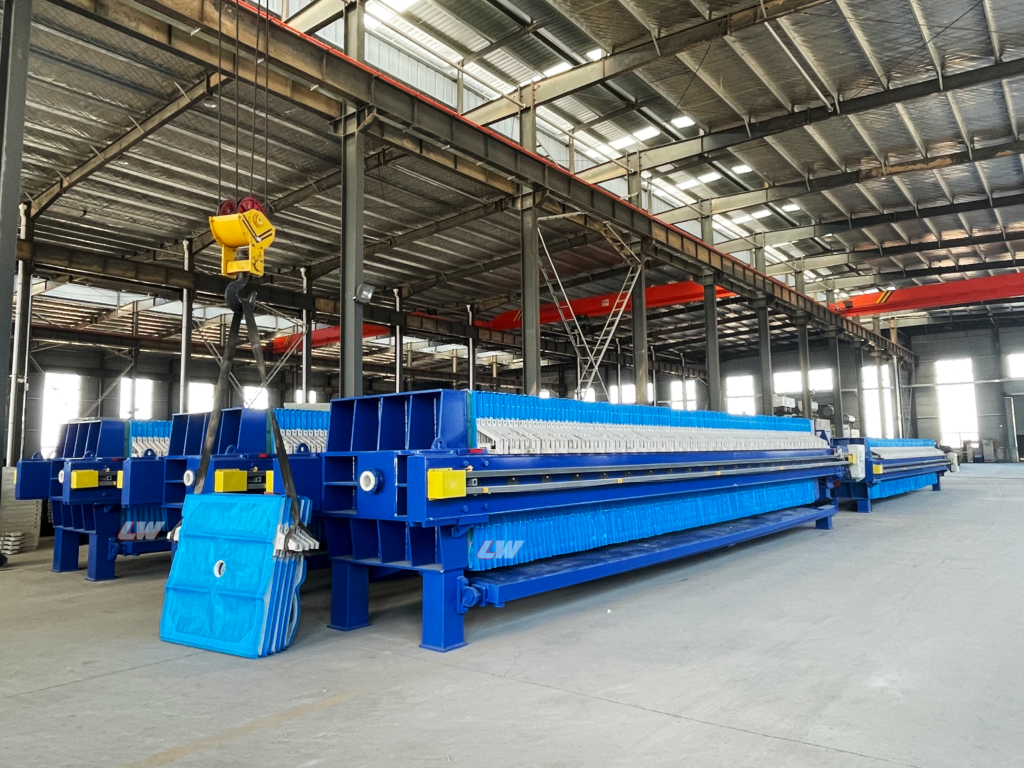
Loway Plate & Frame Filter Press offers simple yet reliable solid-liquid separation for industries requiring periodic batch processing. Its modular design allows easy capacity expansion by adding plates.
The Plate & Frame Filter Press consists of a series of alternating plates and frames. The plates are covered with filter cloths, and the frames form chambers for slurry filtration. The plates and frames are clamped together using a hydraulic or mechanical system, creating a sealed environment for the filtration process.
Plate and frame filter presses are essential for solid-liquid separation in industries like wastewater treatment, chemical processing, mining, and food production. Known for their reliability and efficiency, these machines use pressure filtration to extract solids from slurries, producing dry filter cakes and clear filtrate.
Key Features:
✅Modular Construction: Easy expansion by adding more plates
✅High Filtration Area: Maximum surface area in minimal footprint
✅Robust Build: Heavy-duty construction for industrial environments
✅Pressure Resistance: Typically operates at 6-15 bar, with high-pressure models available
✅Variable Cake Thickness: Adjustable based on frame thickness
Technical Specifications
| Parameter | Range/Specification |
|---|---|
| Plate Size | 500×500 mm to 2000×2000 mm |
| Number of Plates | 10–200 |
| Filtration Area | 5–500 m² |
| Operating Pressure | 7–30 bar |
| Cake Capacity | 15–1500 L/cycle |
| Power Requirements | 3–30 kW (varies by model) |

Design of Plate and Frame Filter Press
The core structure of a plate and frame filter press consists of flat solid plates (called “drainage plates”) covered with filter cloth, with hollow filter frames positioned between each plate. The machine frame secures and compresses the filter plates, creating chambers formed by drainage plates on both sides of the frame, where filter cake collects within the filter frames.

-
Suitable Suspension Properties:
Ideal for suspensions with highly compressible or nearly incompressible filter residues, typically processing suspensions with solid particle concentrations below 10%.
-
Operating Parameters:
Standard operating pressure ranges from 0.3 to 0.6 MPa, with special applications reaching over 3 MPa. Filtration area can be flexibly adjusted by adding or removing plate and frame units.
-
Structural Specifications:
Plates and frames are typically square-shaped with inner edge lengths of 320-2000mm, frame thickness of 16-80mm, and maximum filtration area reaching 1200 square meters.
-
Compression Methods:
Available in manual screw, electric screw, and hydraulic types.
-
Material Selection:
Filter plates and frames come in various materials including wood, cast iron, cast steel, stainless steel, polypropylene, and rubber (traditionally wood or cast iron).
Plate and Frame Filter Presses Working principle
Filtration Stage
Slurry enters through corner holes via feed pumps, flowing into each filter frame. Solid particles accumulate on the filter cloth as the filtrate passes through the drainage plate outlets, collecting in the corner holes and flowing through the discharge pipes to subsequent processes.
Discharge Stage
When the filter frames fill with solids, the feed pump stops, the filter press opens, and the filter cake (the solid product formed on the filter cloth) falls into the hopper below.
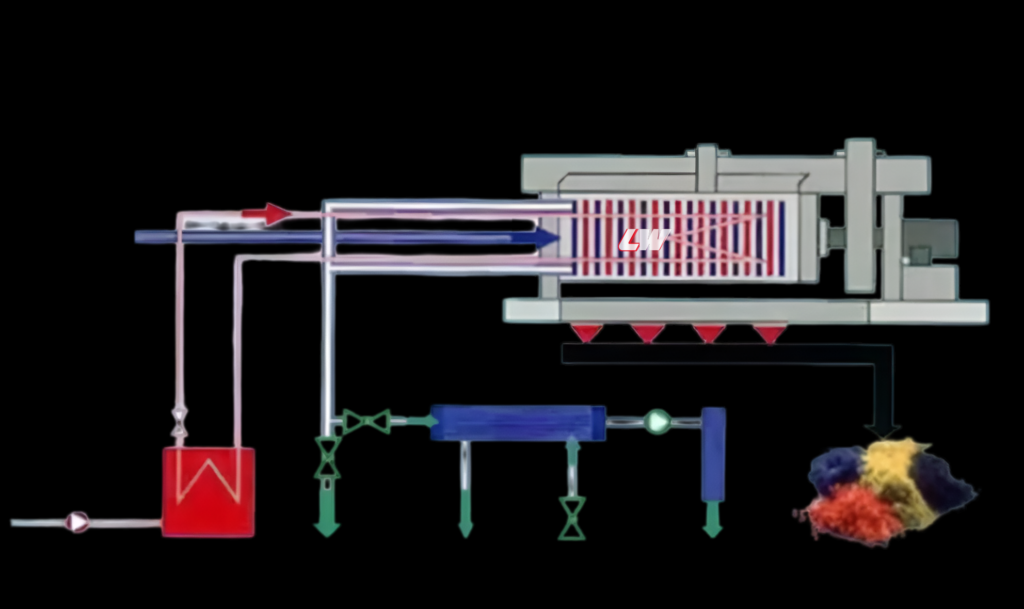
Advantages and Disadvantages of Plate and Frame Filter Presses
Advantages
High Flexibility in Filter Media for Precision Separation
Plate and frame filter presses can accommodate different filter cloth materials and even layer special media like filter paper to meet high-precision filtration requirements.
- Food Industry Example: In glucose production, glucose crystals are extremely fine (50-100μm particle size). Traditional filter cloth often allows particle penetration. By layering quantitative filter paper (such as cotton filter paper with 1-5μm pore size) over polypropylene filter cloth, efficient separation of crystals from mother liquor is achieved. The filter cloth can be reused over 50 times, reducing consumable costs.
- Pharmaceutical Industry Example: When processing antibiotic fermentation broths that require removal of mycelia and protein impurities (particle size <1μm), combining nylon filter cloth with cellulose filter paper support ensures filtrate clarity (turbidity <0.5 NTU) while allowing quick adaptation to different batch materials by simply changing filter paper.
Controllable Filter Cake Moisture Content for High-Value Materials
The plate and frame structure allows further moisture reduction by adjusting pressing pressure (such as increasing to 1.5 MPa). In lithium iron phosphate production for battery materials, plate and frame filter presses can control filter cake moisture content below 20%, reducing drying energy consumption by 30% compared to chamber filter presses and directly lowering subsequent drying process costs.
Disadvantages
Uneven Pressure Distribution: Material enters through small openings at frame corners, potentially causing blockages that result in uneven frame filling and pressure distribution, which can damage filter plates.
Leakage Risk: The non-recessed filter plate design makes the lower edge of filter cloth prone to dripping. Equipment typically requires installation on elevated platforms or above collection pools to capture leaked liquids.
Safety Operating Procedures
Strict adherence to safety guidelines is essential:
- Never insert hands, feet, or head between filter plates during operation, or observe equipment below through plate gaps
- Avoid placing tools on pull hooks or filter plate handles
- Wear appropriate footwear (no high heels or bare feet) and avoid extending head or hands between plates during unloading
- Inspect equipment condition beforehand, ensuring filter cloth integrity and proper component operation
Loway Plate and Frame Filter press Technical Parameter Table
650-U (BK) Plate and Frame Filter Press Technical Parameters | ||||||||||
| Technical parameters: Cylinder working stroke 360, maximum stroke 400, filter plate size length × width × thickness: 650*650*30; hydraulic clamping, automatic pressure maintenance, mechanical pressure maintenance | ||||||||||
| Model | Filtration area (m²) | Filter plate/filter frame quantity | Filter cake thickness (mm) | Filter chamber volume | Foundation size (mm) | Machine weight (Kg) | Dimensions (mm) | |||
| L | W | H | ||||||||
| BA MY5/650-U (BK) | 5 | 11 | 10 | 30 | 80 | 1500 | 970 | 1800 | 1070 | 1150 |
| BA MY10/650-U(BK) | 10 | 21 | 20 | 160 | 2100 | 1160 | 2480 | |||
| BA MY15/650-U(BK) | 15 | 31 | 30 | 240 | 2700 | 1360 | 3080 | |||
| BA MY20/650-U(BK) | 20 | 41 | 40 | 320 | 3300 | 1560 | 3680 | |||
| BA MY25/650-U (BK) | 25 | 51 | 50 | 400 | 3900 | 1750 | 4280 | |||
| BA MY30/650-U (BK) | 30 | 61 | 60 | 480 | 4500 | 1940 | 4880 | |||
800-U(BK) filter press technical parameter table | ||||||||||
Technical parameters: working stroke 380, maximum stroke 410, filter plate size L*W*T: 800*800*30; frame size L*W*T: 800*800*30; Hydraulic clamping, automatic pressure maintenance | ||||||||||
Model | Filtration area | Filter plate/filter | Filter cake thickness | Filter chamber volume | Foundation size | Machine weight | Dimensions (mm) | |||
L | W | H | ||||||||
BA MY20/800-U(BK) | 20 | 21 | 20 | 30 | 320 | 2360 | 2150 | 3030 | 1070 | 1150 |
BA MY30/800-U(BK) | 30 | 31 | 30 | 480 | 2960 | 2700 | 3630 | |||
BA MY40/800-U(BK) | 40 | 41 | 40 | 640 | 3560 | 3250 | 4230 | |||
BA MY50/800-U(BK) | 50 | 51 | 50 | 800 | 4160 | 3800 | 4830 | |||
BA MY60/800-U(BK) | 60 | 61 | 60 | 960 | 4760 | 4350 | 5430 | |||
BA MY70/800-U(BK) | 70 | 71 | 70 | 1120 | 5360 | 4900 | 6030 | |||
BA MY80/800-U(BK) | 80 | 81 | 80 | 1280 | 5960 | 5450 | 6630 | |||
870-U (BK) filter press technical parameter table | ||||||||||
Technical parameters: working stroke 460, maximum stroke 660, filter plate size length × width × thickness: 870mm*870mm*30mm; Hydraulic clamping, automatic pressure maintenance | ||||||||||
Model | Filtration area | Filter plate/filter frame quantity | Filter cake thickness | Filter chamber volume | Foundation size | Machine weight | Dimensions (mm) | |||
L | W | H | ||||||||
BA MY20/870-U(BK) | 20 | 19 | 18 | 30 | 320 | 2210 | 2600 | 3030 | 1140 | 1230 |
BA MY30/870-U(BK) | 30 | 27 | 26 | 480 | 2750 | 2880 | 3630 | |||
BA MY40/870-U(BK) | 40 | 36 | 35 | 640 | 3560 | 2150 | 4230 | |||
BA MY50/870-U(BK) | 50 | 45 | 44 | 800 | 4160 | 3450 | 4830 | |||
BA MY60/870-U(BK) | 60 | 54 | 53 | 960 | 4760 | 3700 | 5430 | |||
BA MY70/870-U(BK) | 70 | 63 | 62 | 1120 | 5360 | 3980 | 6030 | |||
BA MY80/870-U(BK) | 80 | 72 | 71 | 1280 | 5960 | 4250 | 6630 | |||
BA MY90/870-U(BK) | 80 | 80 | 79 | 1280 | 5960 | 4520 | 6630 | |||
BA MY100/870-U(BK) | 80 | 89 | 88 | 1280 | 5960 | 4800 | 6630 | |||
1000-U(BK) Plate and Frame Filter Press Technical Parameters | ||||||||||
Technical parameters: working stroke 480, maximum stroke 510, filter plate size length × width × thickness: 1000mm*1000mm*30mm; Hydraulic clamping, automatic pressure maintenance | ||||||||||
Model | Filtration area | Filter plate/filter | Filter cake thickness | Filter chamber volume | Foundation size | Machine weight | Dimensions (mm) | |||
L | W | H | ||||||||
BA M Y32/1000-U(BK) | 32 | 21 | 20 | 30 | 480 | 2390 | 2800 | 3110 | 1270 | 1350 |
BA MY40/1000-U(BK) | 40 | 25 | 24 | 600 | 2630 | 3250 | 3350 | |||
BA MY50/1000-U(BK) | 50 | 31 | 30 | 750 | 2990 | 3550 | 3710 | |||
BA MY60/1000-U(BK) | 60 | 37 | 36 | 900 | 3350 | 3870 | 4070 | |||
BA MY70/1000-U(BK) | 70 | 43 | 42 | 1050 | 3710 | 4200 | 4430 | |||
BA MY80/1000-U(BK) | 80 | 49 | 48 | 1200 | 4070 | 4550 | 4790 | |||
BA MY90/1000-U(BK) | 90 | 55 | 54 | 1350 | 4430 | 4870 | 5150 | |||
BA MY100/1000-U(BK) | 100 | 61 | 60 | 1500 | 4790 | 5200 | 5510 | |||
BA MY110/1000-U(BK) | 110 | 67 | 66 | 1650 | 5150 | 5540 | 5870 | |||
BA MY120/1000-U(BK) | 120 | 76 | 72 | 1800 | 5510 | 5880 | 6230 | |||

Need More Details
Ready to optimize your filtration process? Contact our team of filtration experts for a consultation and customized solution proposal.
Selecting the Right Filter Press Equipment
Common Solutions of Plate and Frame Filter Press
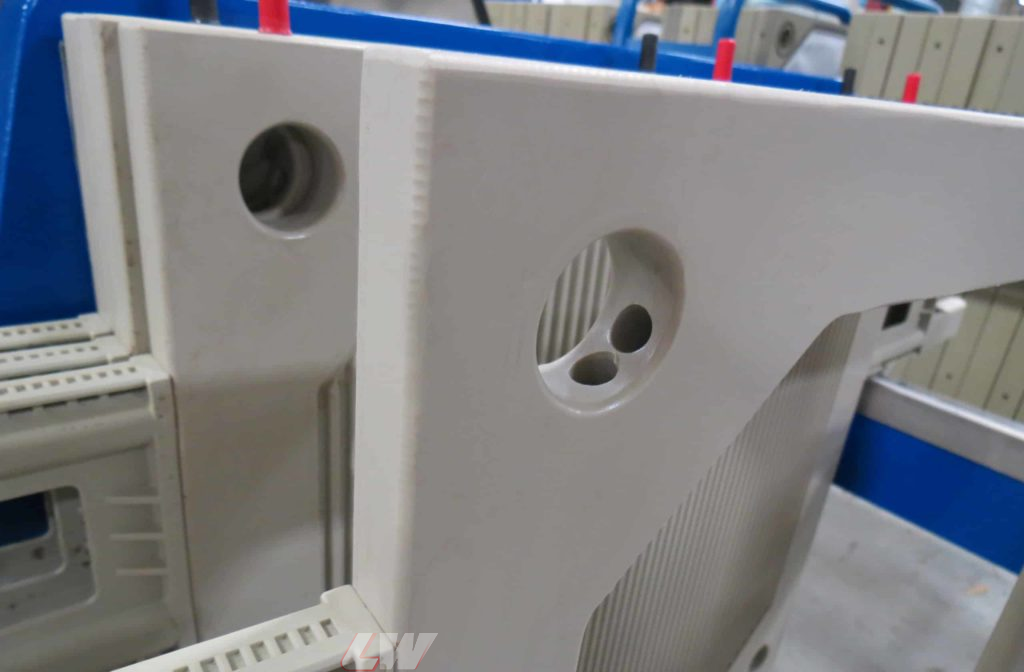
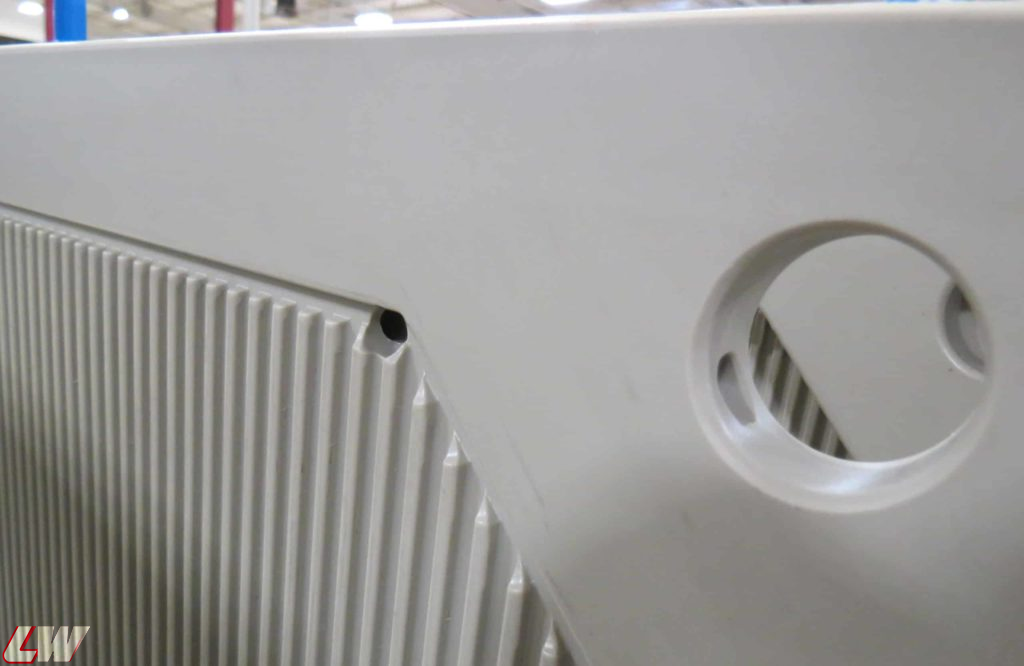
Filter Plate Damage: Usually caused by feed inlet blockage or uneven force distribution. Clean mud blocks, inspect filter cloth and drainage outlets, ensure smooth feeding and balanced plate frame pressure.
Water Seepage: Caused by filter cloth wrinkles, insufficient hydraulic pressure, or debris on sealing surfaces. Solutions include increasing hydraulic pressure, cleaning filter cloth, and cleaning sealing surfaces.
Abnormal Filter Cake Formation: Results from insufficient feed or blockages. Adjust process parameters, clear blockages, and improve feed quality.
Slow Filter Plate Movement: Due to guide rod blockage or poor lubrication. Remove debris, maintain proper lubrication, and prevent guide rod displacement.
Hydraulic System Failure: Regular maintenance prevents oil leaks and pressure instability. Check valves and replace O-ring seals to resolve most issues.
Insufficient Filter Chamber Filling: Can lead to filter plate damage. Check for channel blockages, clean filter cloth, and adjust springs to ensure flatness.
Turbid Filtrate: Repair or replace damaged filter cloth. For damaged filter plates, use oil-based repair agents (clean grooves → mix repair agent → apply and compress).
Common Questions
Have More Questions? Our technical team is ready to provide detailed, personalized guidance.
Q1: What industries use plate and frame filter presses?
Mining, chemicals, food processing, wastewater treatment, and pharmaceuticals.
Q2: What's the difference between recessed plate and plate and frame designs?
Recessed plate designs have chambers built into the plates themselves, while traditional plate and frame designs use separate frames between flat plates to create filtration chambers. Recessed designs can offer easier cake discharge but may have lower volume capacity.
Q3: How often should filter cloths be replaced?
Filter cloths typically last 3-12 months depending on application, pressure, and material being filtered. Inspect regularly for signs of wear, blinding, or decreased performance.
Q4: What automation options are available?
Modern presses range from basic semi-automatic (one-button cycle start) to fully automatic systems with PLC controls, robotic cloth changing, automatic cake discharge, and remote monitoring capabilities.
Q5: What safety features are important?
Look for hydraulic pressure relief valves, emergency stop controls, mechanical safety locks, guard rails, two-hand operation controls, and pressure monitoring systems.
Q6: What shall we consider when choosing a plate and frame filter press?
When choosing a plate and frame filter press, consider:
- Material Characteristics: Particle size, solids concentration, filterability
- Production Requirements: Batch size, cycle time, automation needs
- Filtration Goals: Cake dryness, filtrate clarity, throughput
- Operation Environment: Temperature, chemical compatibility, space constraints
- Budget Considerations: Initial investment vs. operational costs
How it works
We provide one-stop service of solid-liquid seporator planning, design, consultation, construction, equipment manufacturing, installation, commissioning and training. We are involved in complete sets of sludge dewatering projects for various industries.
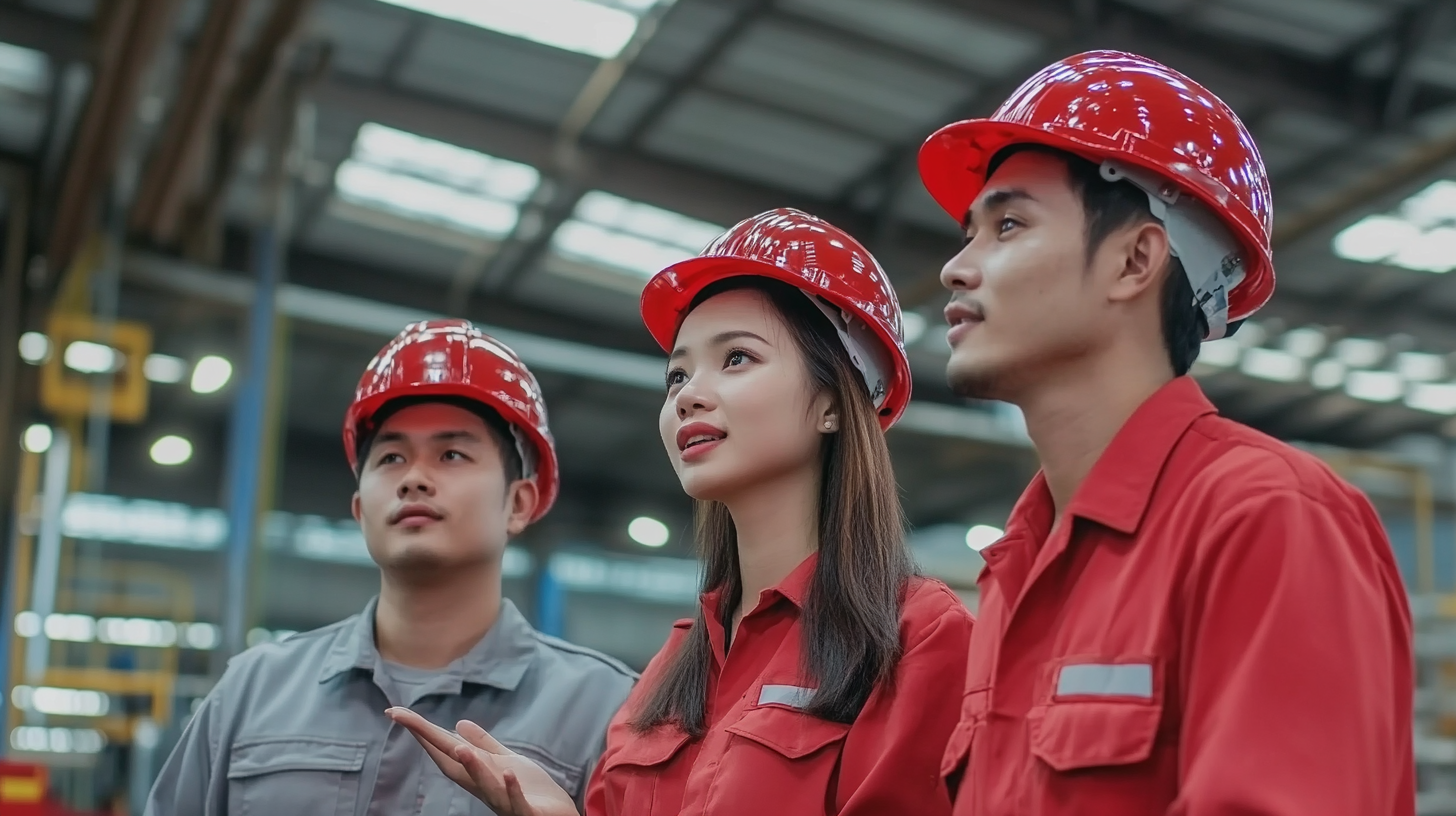
Consultation what you need.
We do not aim to achieve maximum profit and do not reduce the quality of our products by catering to the market with low prices. We are happy to provide high quality tailor-made filtration equipment to you.
Production the filter press equipment for you
Our professional and advanced production technology, excellent manufacturing process, and perfect testing ensure that your equipment fully meets the quality acceptance standards.
Installation and commissioning equipment
Our skilled installation team installs this equipment for you in strict accordance with the construction drawings and construction process steps. Experienced technicians will debug and analyze the average results on site to achieve the best results and meet the needs of use.
After sales service
Our technicians patiently and meticulously answer all your questions and provide guidance and suggestions through messages, phone calls, videos, and arriving at the site.
